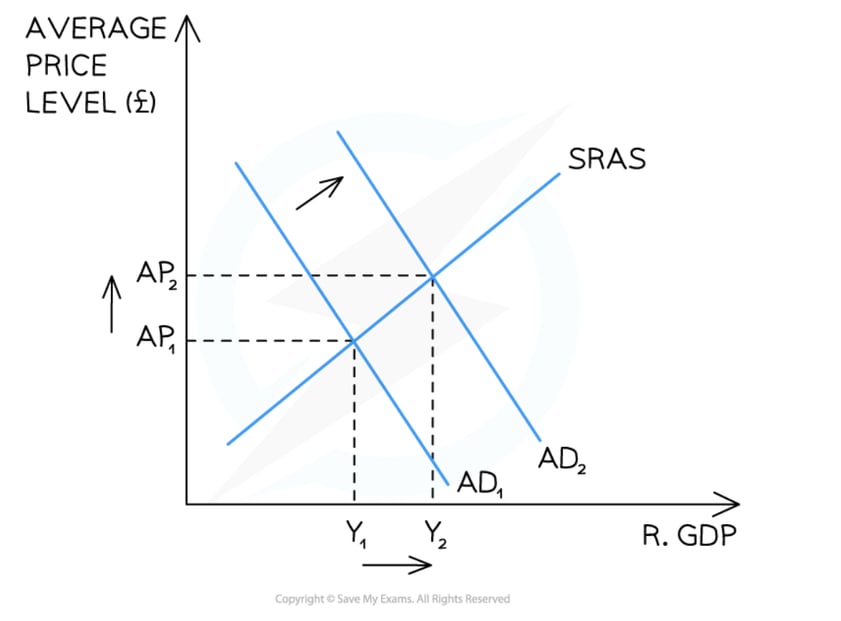- The two main instruments of monetary policy include:
- Incremental adjustments to the interest rate (usually not more than 0.25%)
- Quantitative easing which increases the supply of money in the economy
- The Central Bank creates new money and uses it to buy open-market assets
- When a policy decision is made, it creates a ripple effect through the economy and this effect is known as a transmission mechanism
Diagram: Incremental Changes to Interest Rates

The transmission mechanisms of changes to the interest rate
Before Explaining a Mechanism from the Diagram Above, Key Terminology Can Be Reviewed Below
| Official Rate |
Market Rates |
Asset Prices |
| Exchange Rate |
Net External Demand |
Inflation |
Example 1
- Official rate decreases by 0.25% → market rates decrease → loans are cheaper → consumers borrow more → consumption increases → AD increases → inflation increases
Example 2
- Official rate decreases by 0.25% → market rates decrease → mortgages are cheaper → property buyers borrow more → demand for houses increases → asset prices increase
Example 3
- Official rate decreases by 0.25% → market rates decrease → buyers borrow more → asset prices increase → households with assets feel wealthier → consumption increases → AD increases → inflation increases
Example 4
- Official rate increases by 0.25% → hot money flows increase → the exchange rate appreciates → exports more expensive and imports cheaper → net exports reduce → AD decreases → inflation decreases
Example 5
- Official rate increases by 0.25% → market rates increase → existing loan repayments now more expensive to repay → discretionary income falls → consumption decreases → AD decreases → inflation decreases
The transmission impact on exchange rates
- A change to the bank rate will have an impact on the exchange rate
- When the exchange rate changes, there will be a ripple effect through the economy
- This can be seen in the diagram above, where a change to the exchange rate leads to changes in the net external demand as well as the import prices
How Interest Rates Impact Exchange Rates
Impact of a Decrease in Interest Rates
|
Impact of an Increase in Interest Rates
|
- A decrease in UK interest rates is less attractive for investors
- This causes capital flight as investors move their money out of the country
- As a result, the demand for the pound decreases, causing the exchange rate to fall
- UK exports will become relatively cheaper due to a weaker exchange rate
- Therefore, the initial rise in value of the pound may be mitigated by an increase in export sales
- This increase in demand is dependent on price elasticity of demand of exports
|
- An increase in UK interest rates is more attractive for investors
- This causes capital inflow as investors move their money into the country
- As a result, the demand for the pound increases, causing the exchange rate to rise
- UK exports become relatively more expensive due to a stronger exchange rate
- Therefore, the initial fall in value of the pound may be mitigated by a decrease in export sales
- This increase in demand is dependent on price elasticity of demand of exports
|




